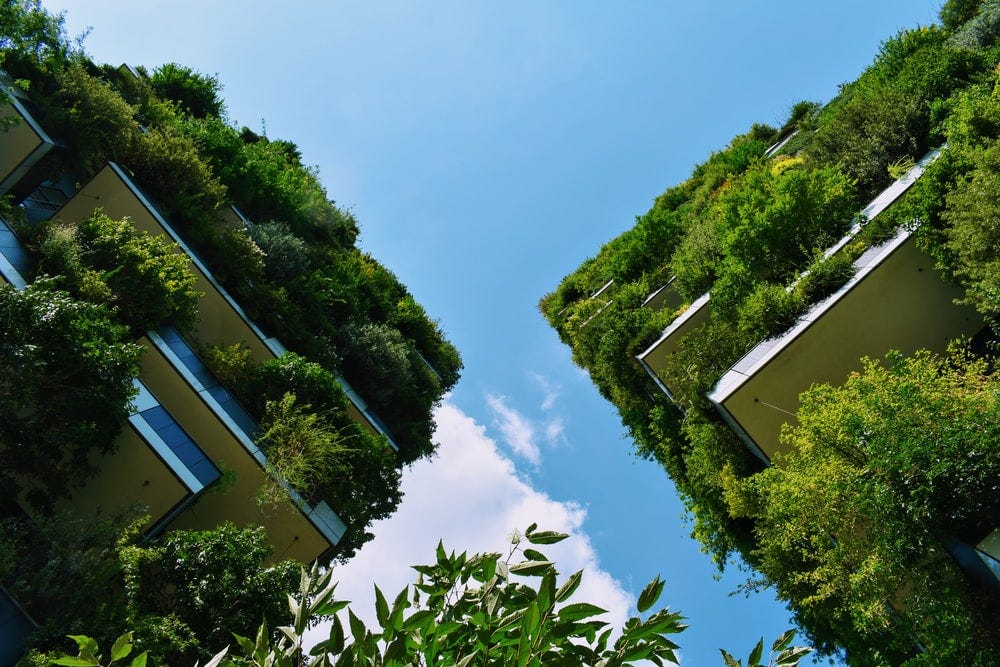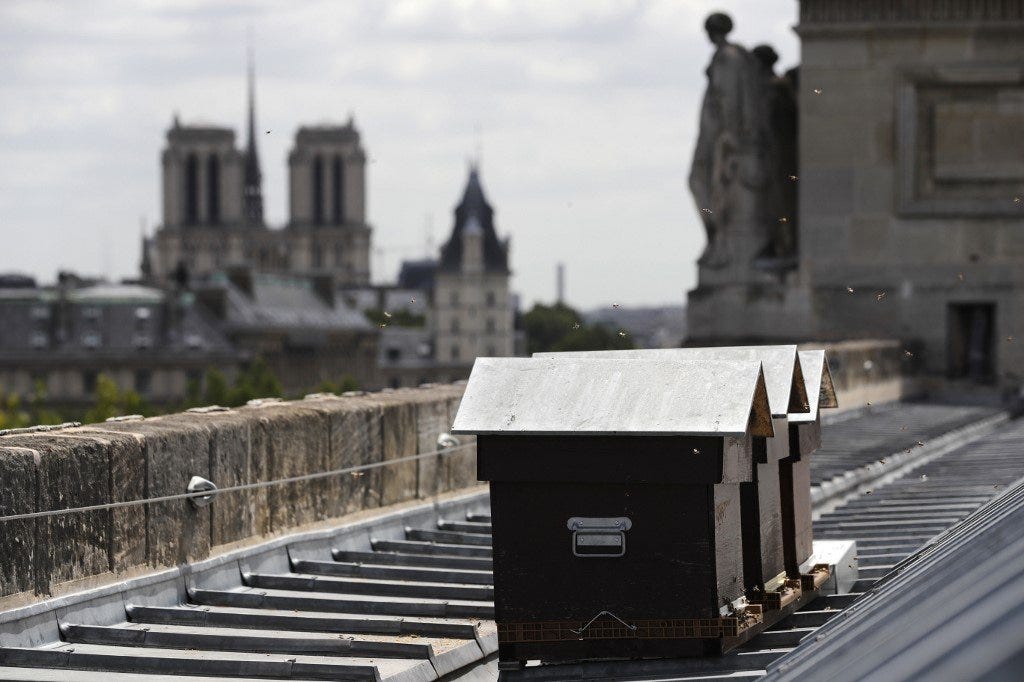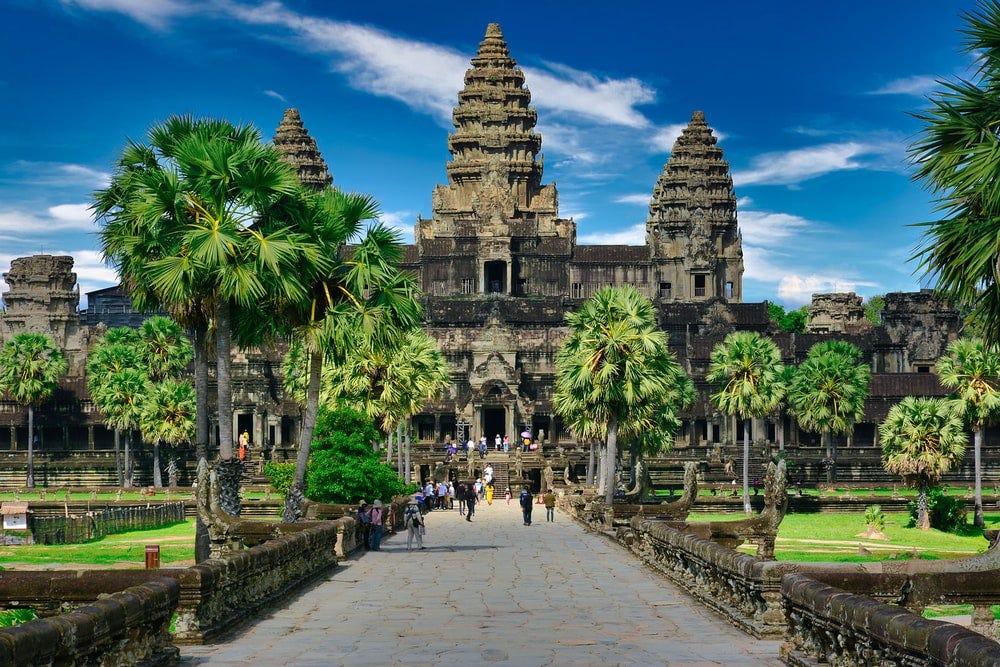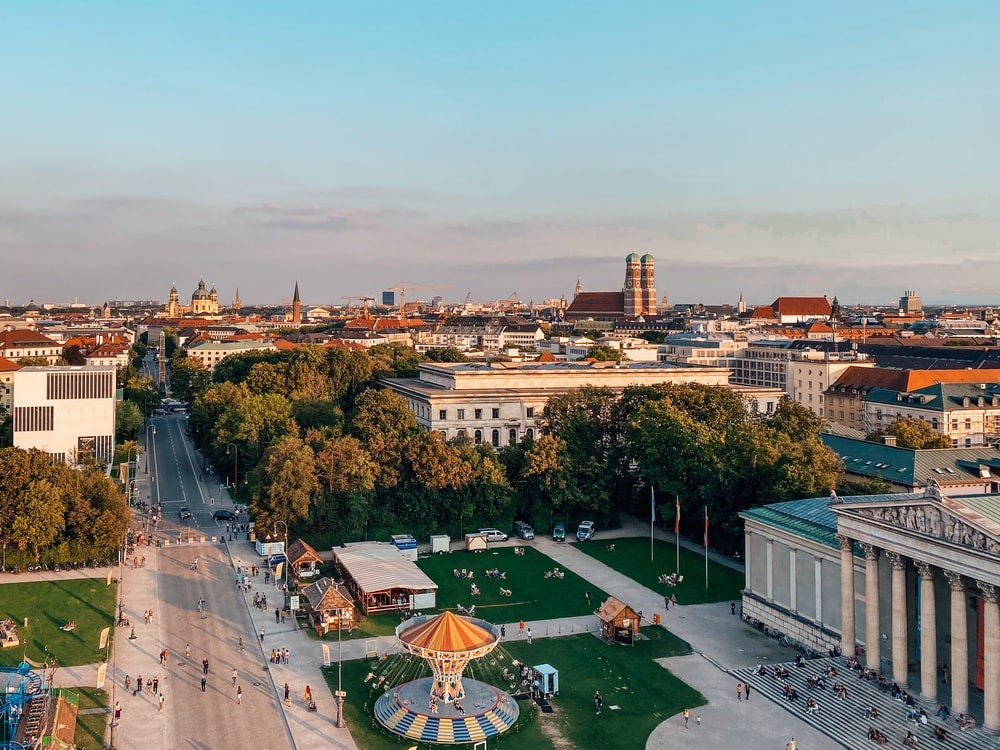on green cities and beehives
I am still melting from the 38C heat I told you about last week, but I don’t have it as bad as the folks of Vancouver where record temperatures for a second day exceeded 47C. Or those living in Pakistan, where a couple of days ago the world’s highest temperatures were recorded.
The planet is overheating and the way we can make our buildings and cities cooler, more liveable and eco-friendly, more in harmony with and less taxing on nature and ecosystems is important not only for climate crisis management but also as it relates to our health and wellbeing.
Living walls are amazing
Living ‘walls covered in plants and shrubs could offer a bridge between the highly urbanized environment of a city center and the expansive green space of a park.’ This article says ‘In Canada, the Vancouver Convention Centre hosts a six-acre “living roof” that boasts over 400,000 “indigenous plants and grasses from 25 different plant species of the Pacific Northwest.” According to the Centre the roof “acts as an insulator”, helping to cut heat gains during the summer months and lowering heat loss through winter.’
What’s not to love?
Rooftop gardens and urban bees
Rooftop gardens, yes, and even rooftop farms. And why not?! And I don’t mean a couple of shrubs in pots.
You can do your bit for sustainability and cooling on your own roof. Here are some pointers from Thrive Global.
Or do like the Parisians and keep your beehives up there. Love Paris – love bees.
There are beehives on landmarks like the Notre Dame (which survived the fire), the Grand Palais and the Opera Garnier and some lesser-known rooftops. Apart from the honey (which we love) bees are incredibly important for pollination and their populations in many parts of the world have seen a worrying decline due to colony collapse disorder. About three-quarters of crops depend on pollinators, mainly bees, and about 20,000 bee species fertilise more than 90 per cent of the world's 107 major crops. Save the bees - drop the pesticides and install beehives on roofs.
Low urban density sprawl in ancient cities
The real urban jungle: how ancient societies reimagined what cities could be is a fun long read. Because who isn’t fascinated by the abandoned jungle city of Angkor Wat or the great Mayan cities like Chichén Itzá?!
And these were not small places, major ancient cities in Central America had populations of as many as 120,000 and scientists have found evidence that diverse “forest gardens” sustained these cities.
It’s a fascinating look at those much romanticised times and places, shining a different light on these societies: prepare to rethink your ideas of urbanisation.
The greenest cities in the world
There are many great initiatives around the world to make cities more sustainable and liveable. These are just some of my favourite green cities in Europe.
Half of Vienna’s area is covered in green spaces and the locals use public transport religiously making it one of the most liveable cities in the world.
Lovely Munich is one of the most walkable cities in the world and if you are looking for the least polluted urban air the city is right up there with the cleanest.
Berlin loves water recycling and it has a filter system for greywater to be recycled and reused for water rooftop gardens. (Yay for rooftop gardens.)
We could also mention Copenhagen in the same breath as it consistently ranks top of best cities in the world rankings.
Out of Europe, Vancouver comes to mind and SF in North American and, going in the other direction, Singapore, which is the greenest city in Asia.
Which are your favourite green cities?
Pics top down: Milan Bosco Verticale, Paris (you knew that one), Angkor Wat (that too), and Munich (isn’t it lovely).







